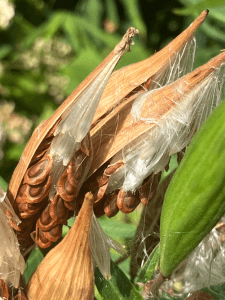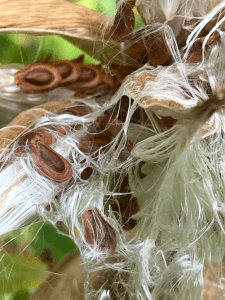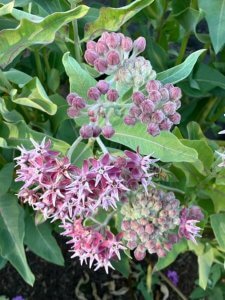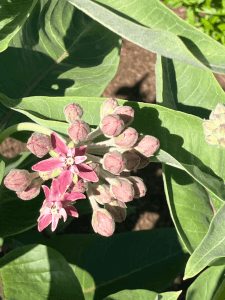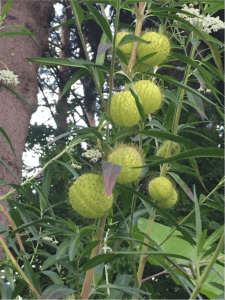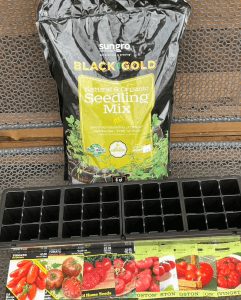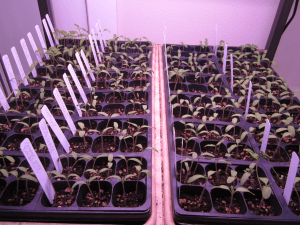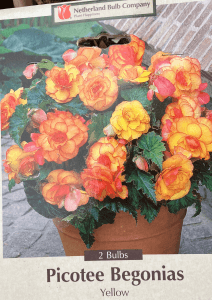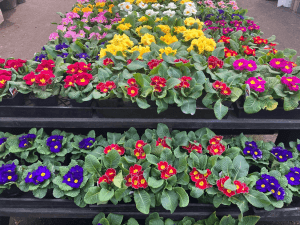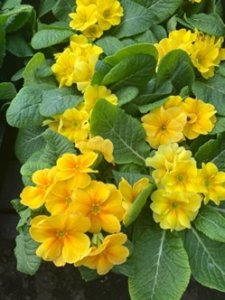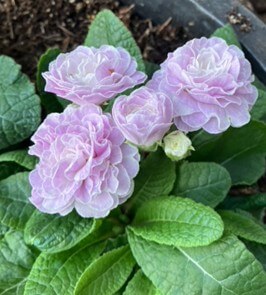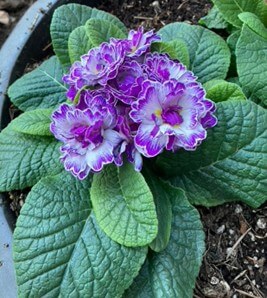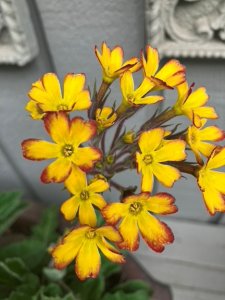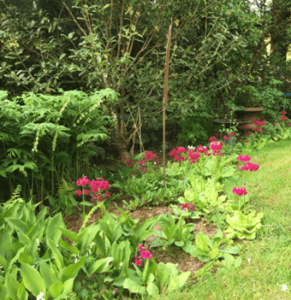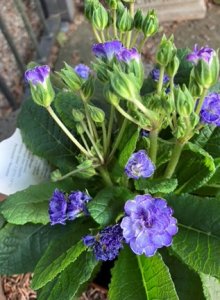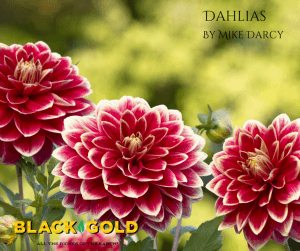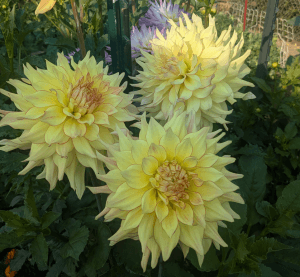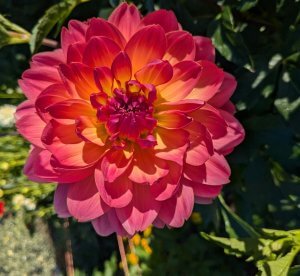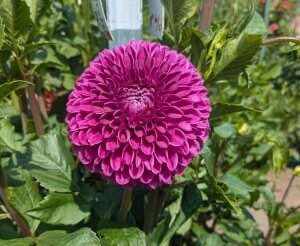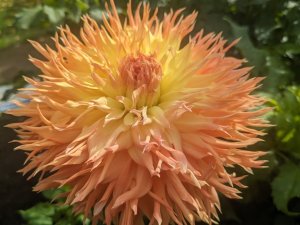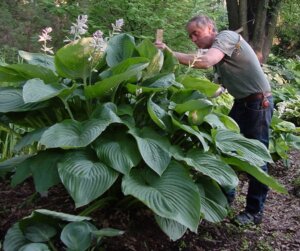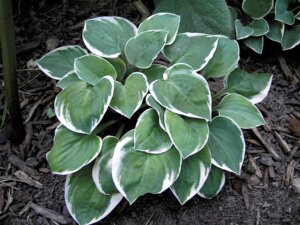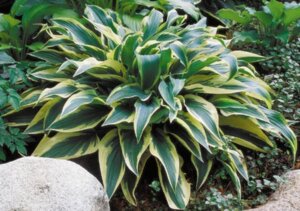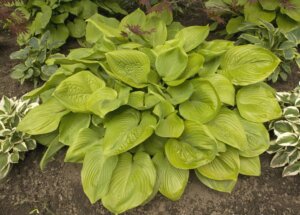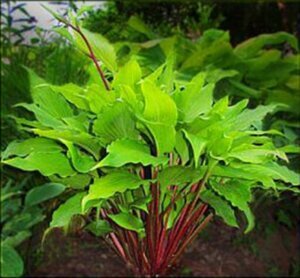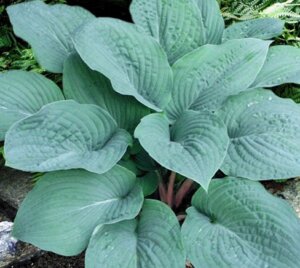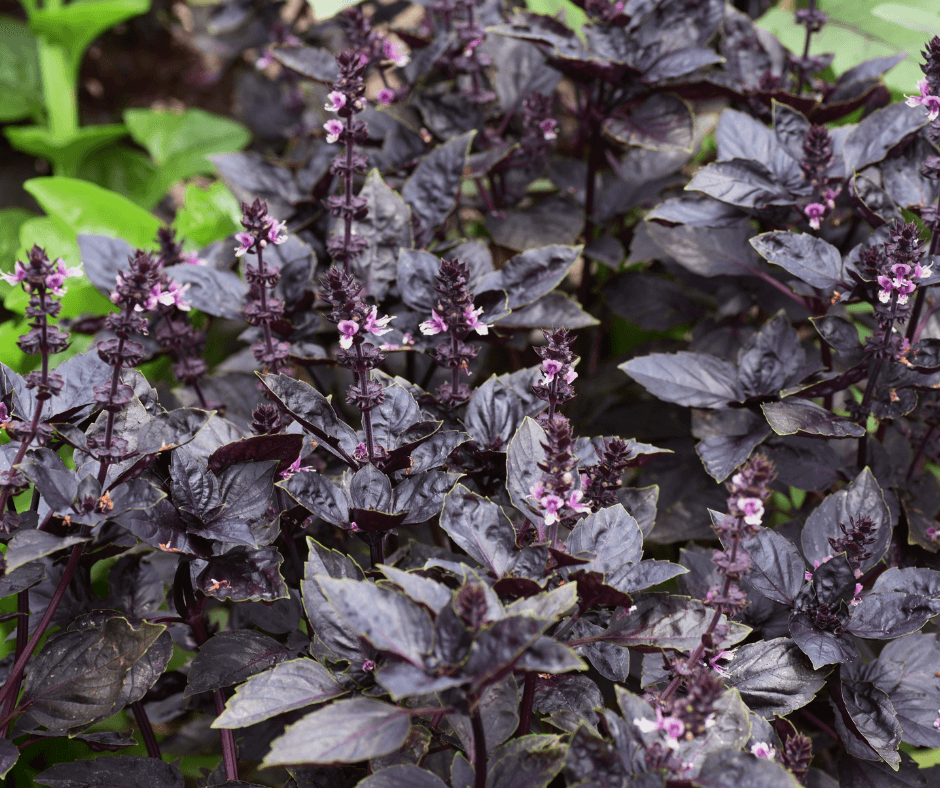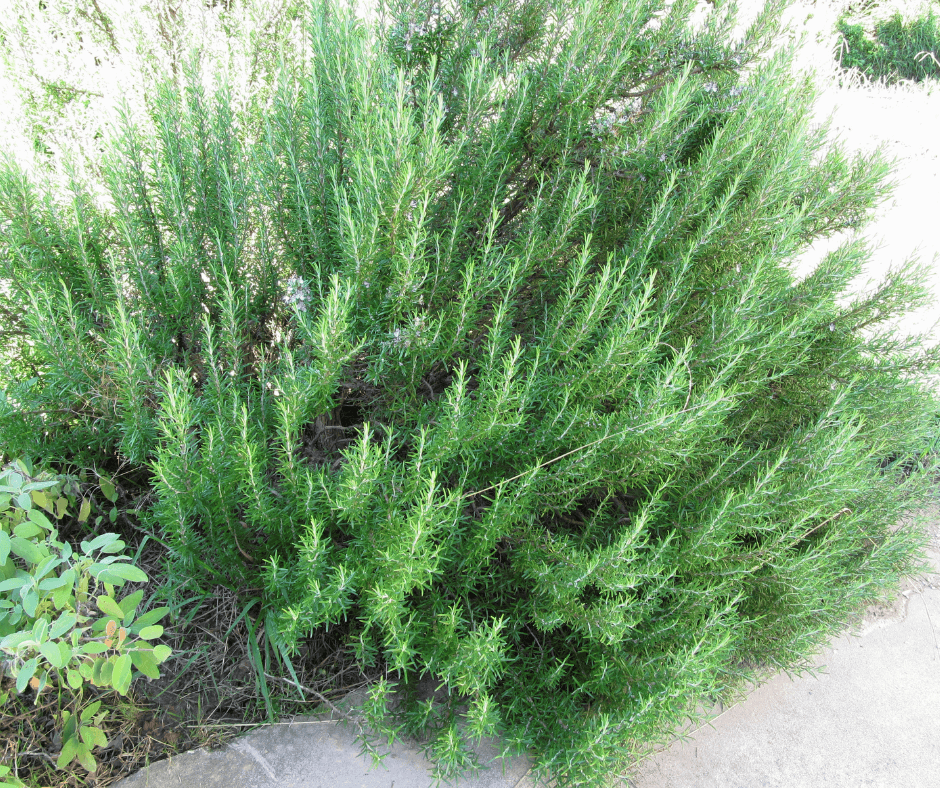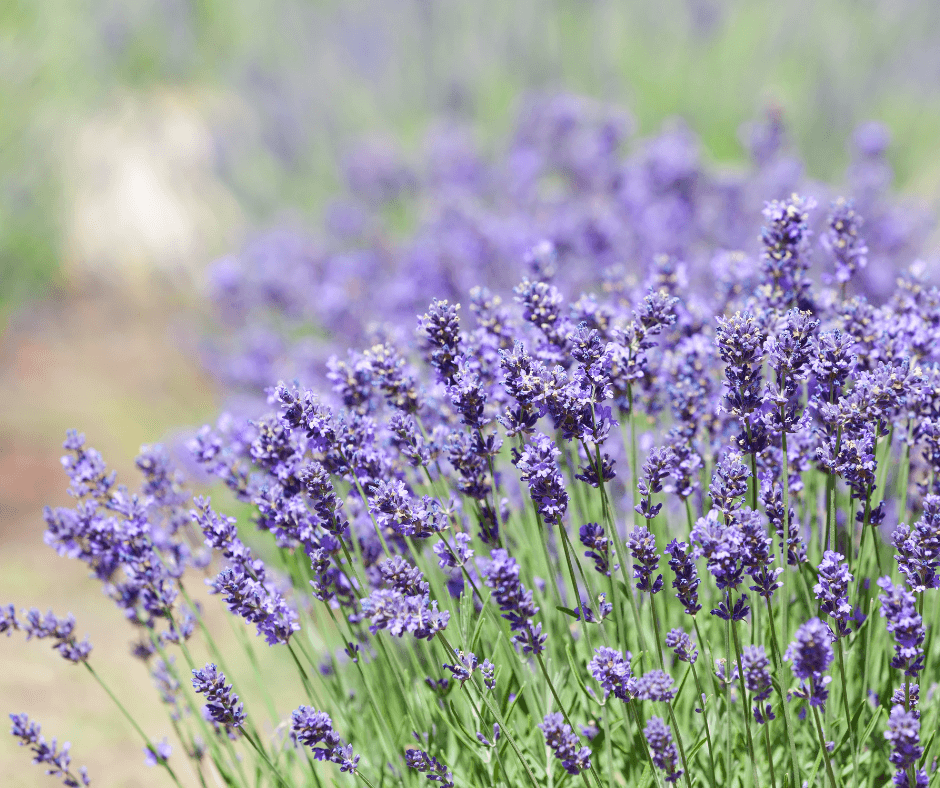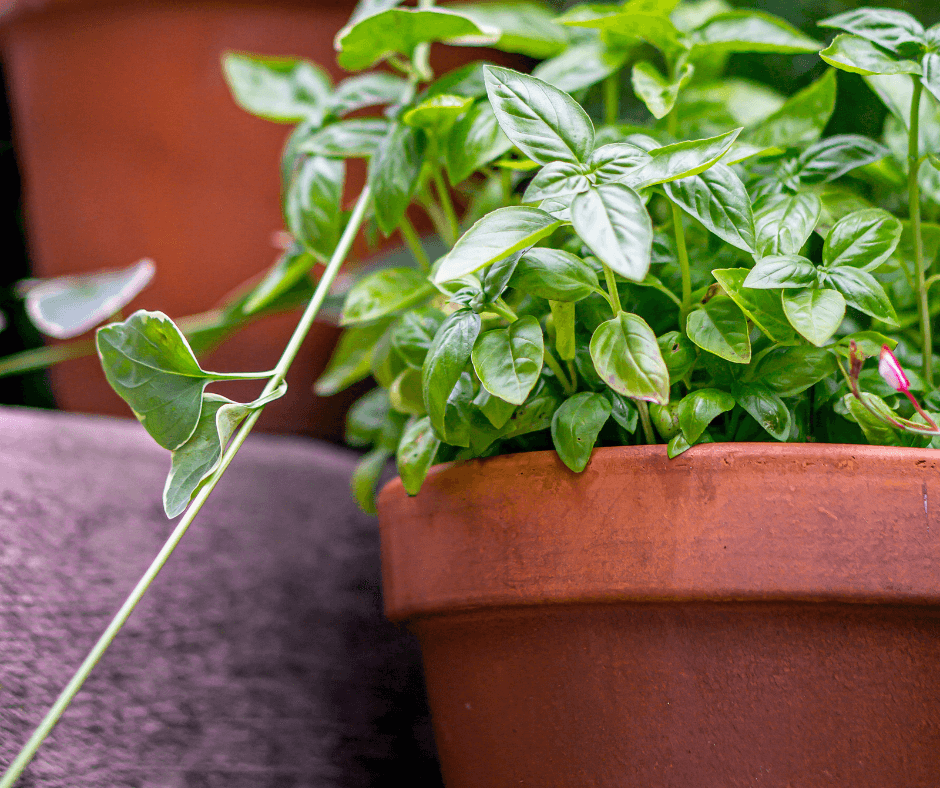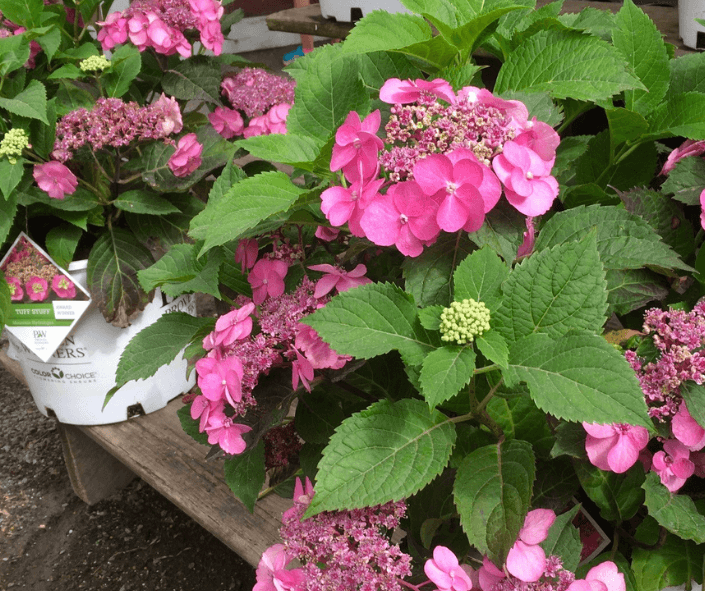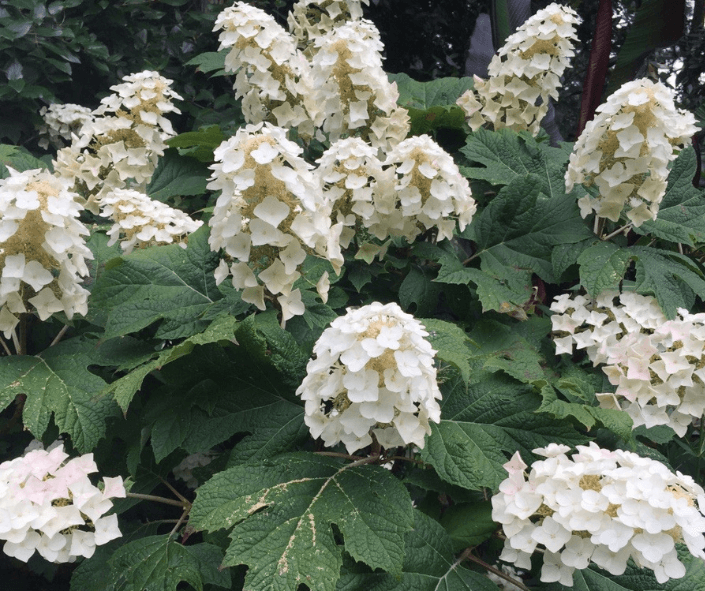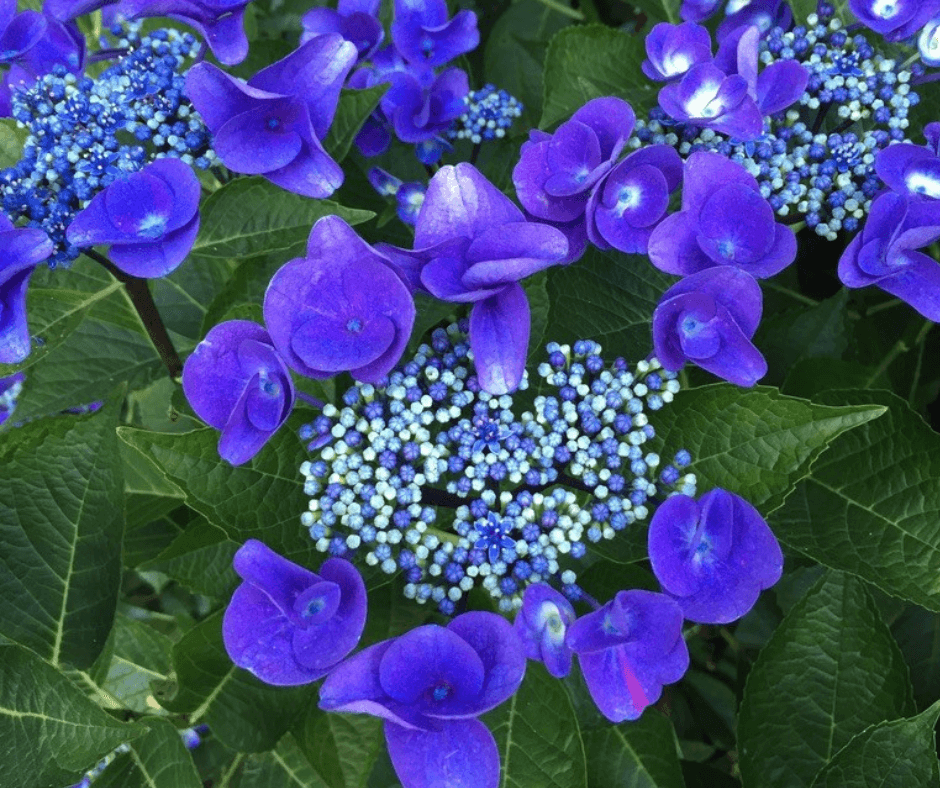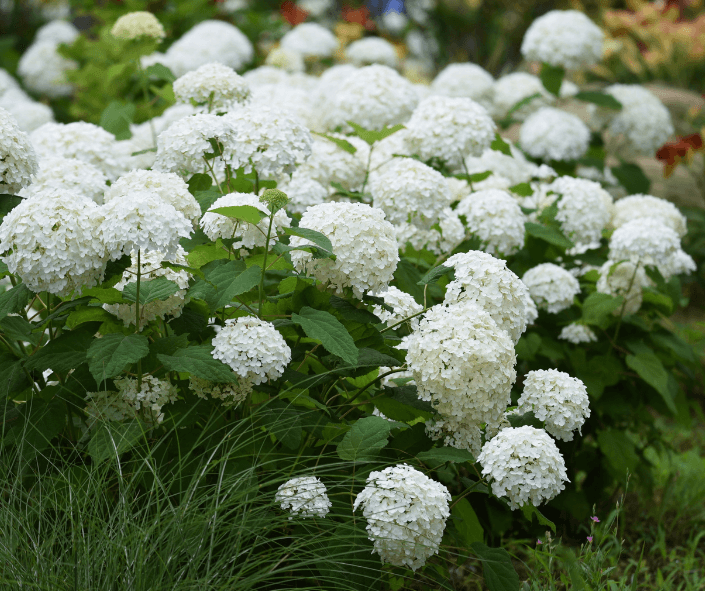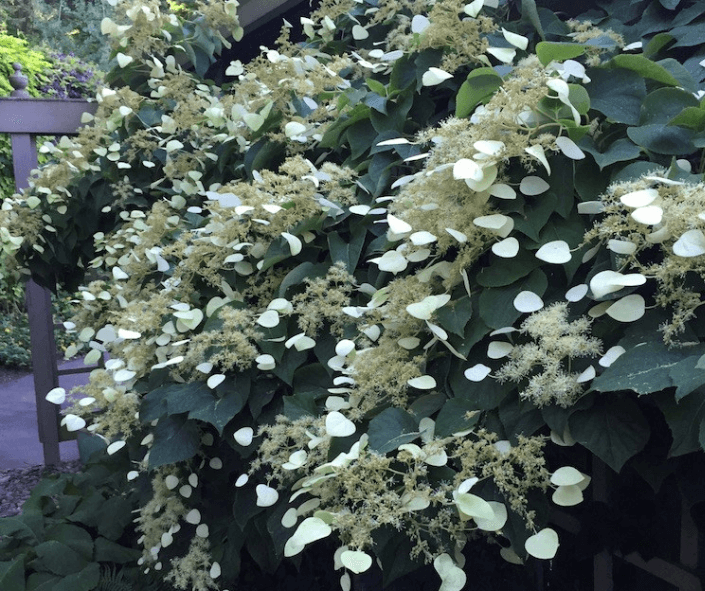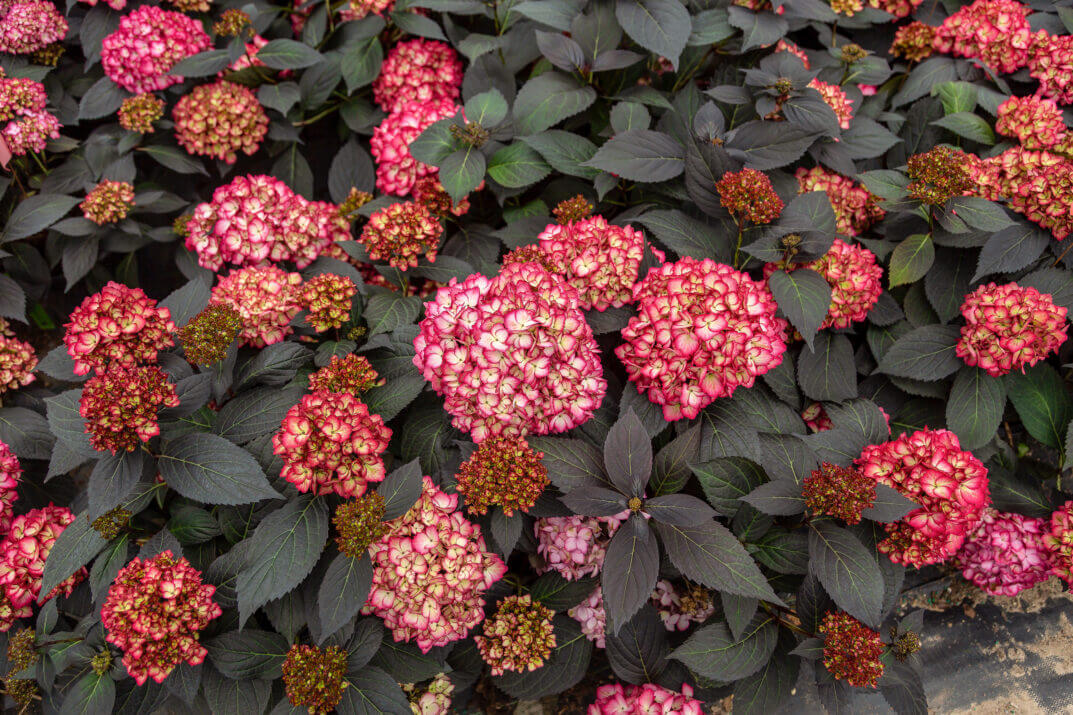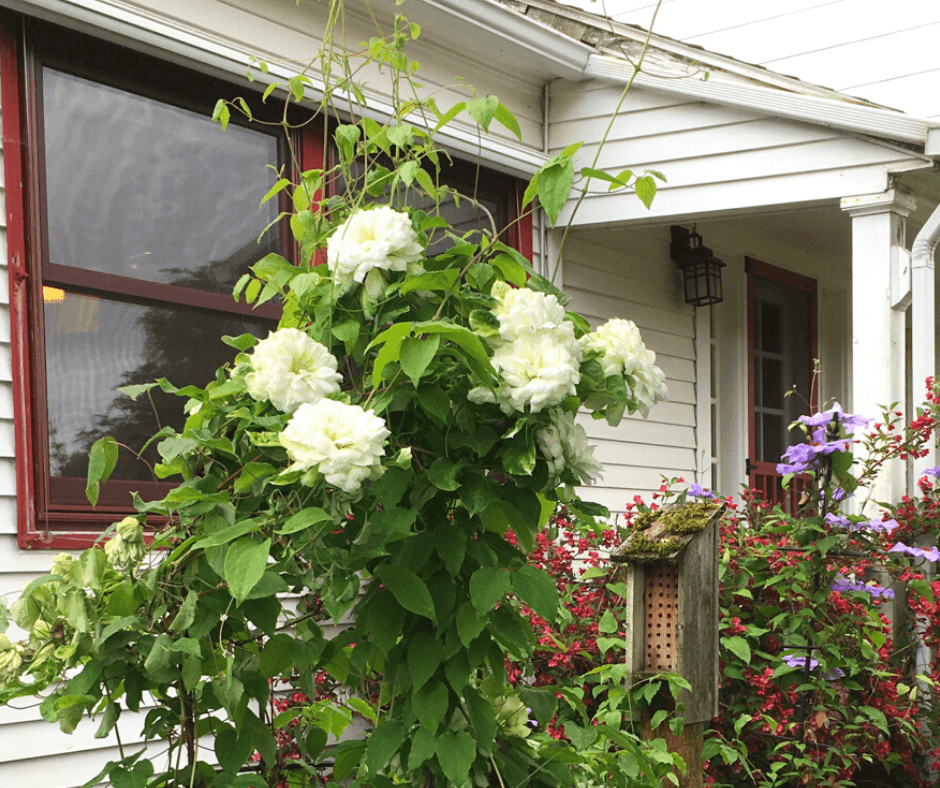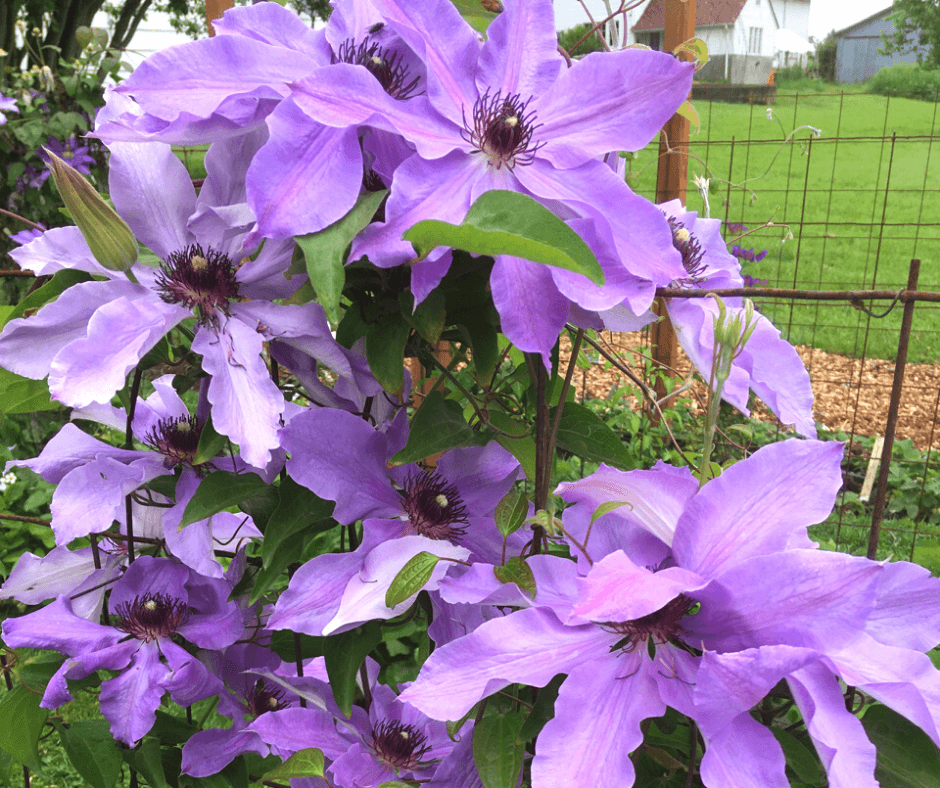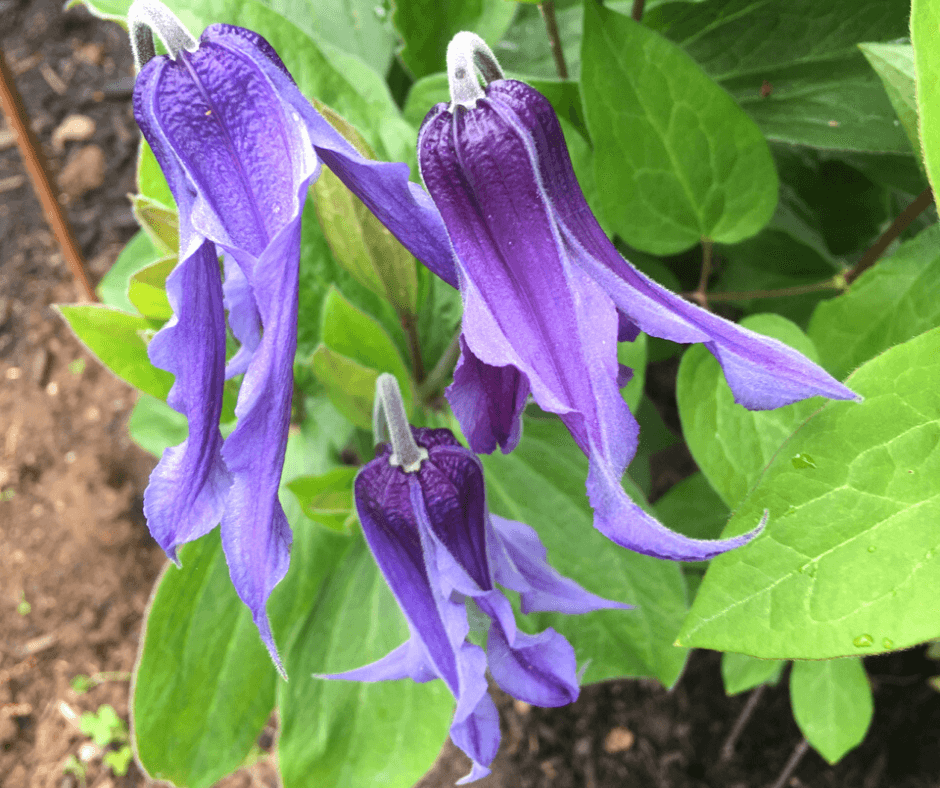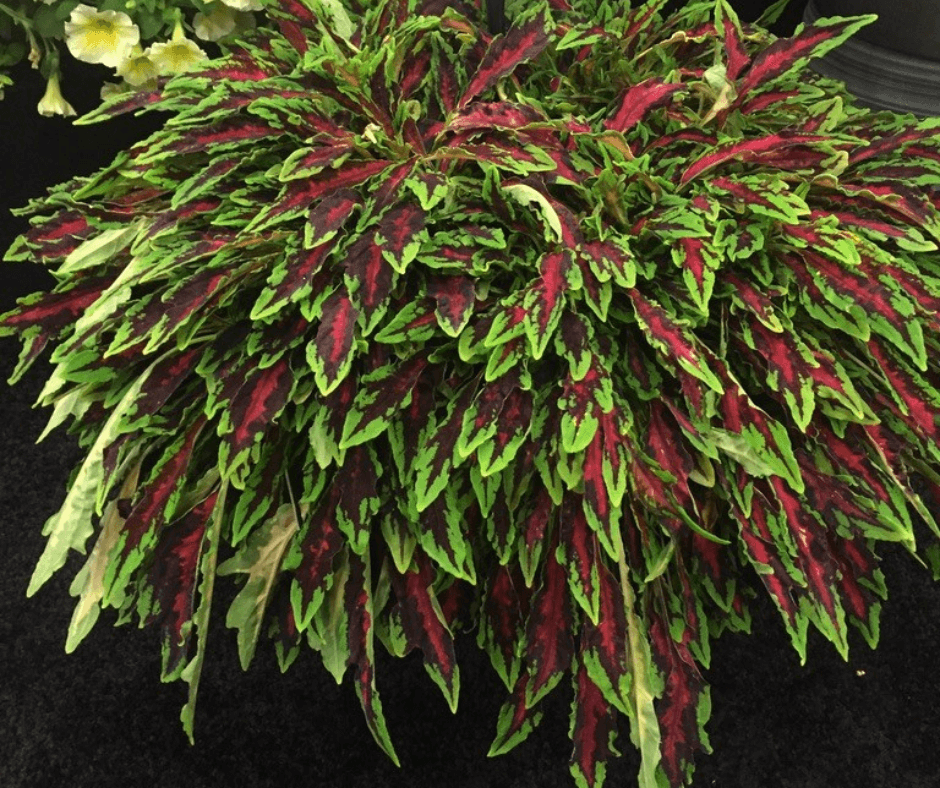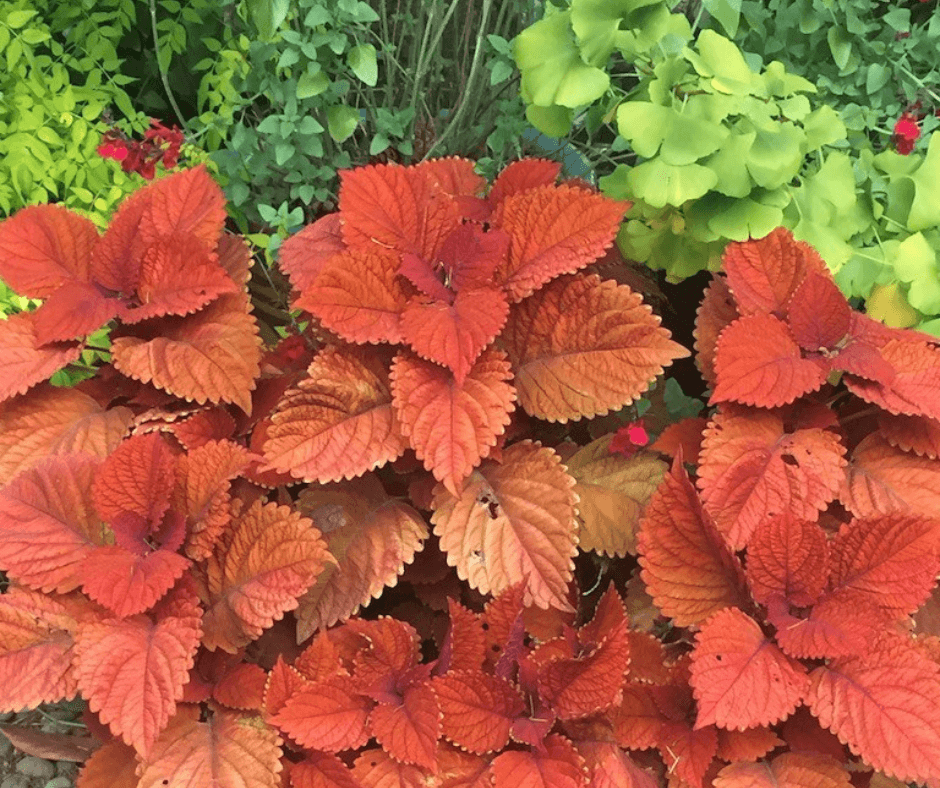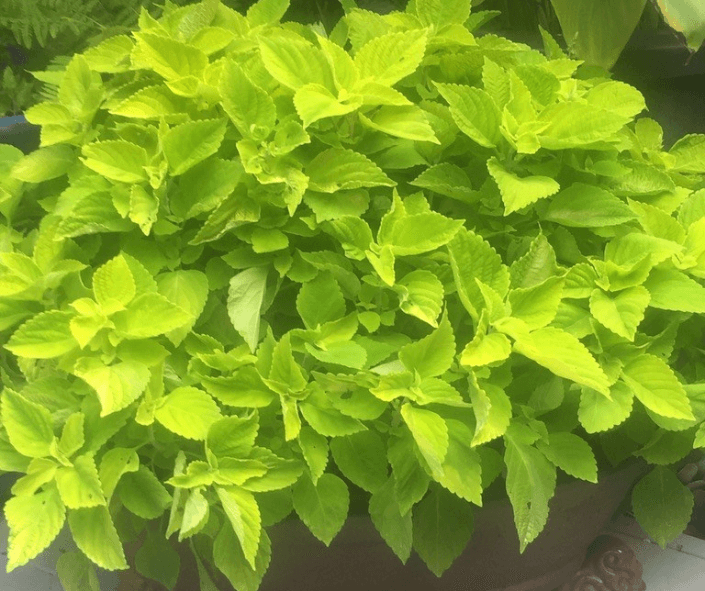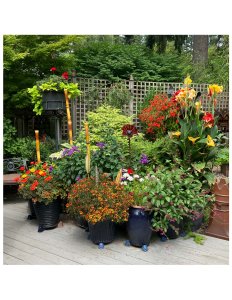
An assortment of pots on this deck giving variety of colors and textures.
Whether it is a large residential garden, a small city lot, an apartment or condominium with a deck or balcony, there is room for some garden containers. Gardening in containers can be versatile because is most cases they can be moved around depending on the season. Planted containers are often used in entryways, there they can be rotated depending on the season and what is blooming. A single container or a grouping in an entryway can make a ‘statement’ about the owners of the house or garden.

These two turquoise pots with a begonia in them is a welcome entrance to this garden and gives an inviting presence,
A planted container can often give the gardener more control as compared to planting in the ground. The gardener can control the potting mix, the right amount of fertilizer and if the container is portable, the placement can also be controlled and can be adjusted throughout the season based on sun/shade requirements. It is also good to keep in mind that a container is going to be exposed to the elements. In. a sunny location, it may dry out on a hot summer day and the plants may suffer without adequate moisture, The choices of containers we have to choose from is vast. It can be simple like a terra-cota pot or an elaborate glazed pot with a great variety of styles, shapes and colors to choose from.
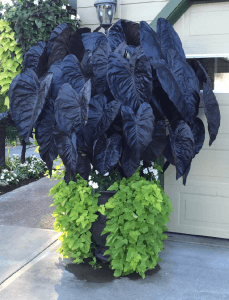
This spectacular planting is just one season’s growth of Colocasia ‘Black Magic’ with Sweet Potato Vine trailing down.
In the selection of a container that is going to be used as a planter, good drainage is essential. Be sure to select a container that has holes for water to drain out from the pot. Most garden plants, except those that are aquatic, will not survive without good drainage. The next step is to select the right potting mix. Give some thought as to the plants that will be used. For general use, I like Black Gold All Purpose Potting Mix because it is formulated for most garden plants. If the plant selection is going to be plants that need a moist soil, such as a hydrangea, Black Gold Natural & Organic Cocoblend Potting Mix, might be a good choice because the coir, (coconut fiber), is excellent for water retention. If succulents and/or cactus are the plant choices, then Black Gold Natural & Organic Succulent & Cactus Potting Mix would be the choice.
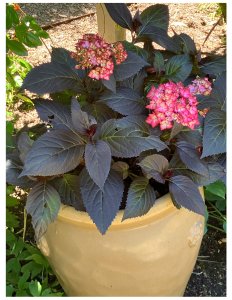
Hydrangea ‘Eclipse’ is relatively new on the market and the dark leaves have made this a ‘standout’ in the garden.
If planting containers is new to you, it would be a good idea to visit a local garden center and get some ideas on pots they have planted. Also, visiting other gardens can be an excellent place to go for ideas. When I visit other gardens and see what other gardeners have planted, I always get some ideas for my own garden.
The following photos are some favorite garden containers that I have seen in the past year.

Acer palmatum ‘Bloodgood’ makes a spectacular show in the autumn with the leaves turning brilliant crimson
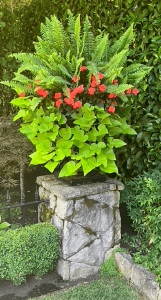
This show stopping combination is a fern that is planted with red impatiens and sweet potato vine trailing down the side of the pot

This red leaf banana, (Ensete ventricosum) is growing in my garden and while not winter hardy, it is fast growing and makes a superb foliage plant in the garden. Japanese Forest Grass is planted at the base.

For a small space on a deck or patio, Coleus ‘Lime Time’ gives chartreuse foliage all summer.

Containers do not just have to be pots. This wagon is loaded with succulents. Make sure to punch holes in the wagon for drainage.

To make your garden guests smile, this container with insect eating plants incorporates some action figures to create added interest,
Come up with your own ideas and let containers become a part of your garden.



